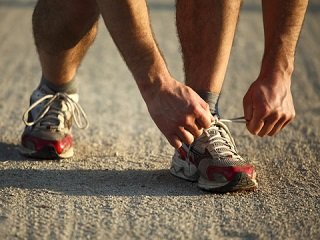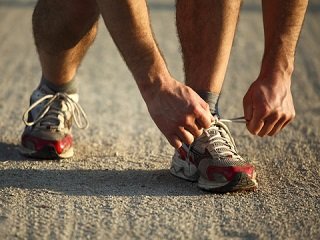 As much as we love a particular piece of outdoor gear, there comes a time when it needs to be replaced. This is a good thing, of course, since it means your gear is being used. As I’ve said in numerous articles, your shoes are perhaps the most important piece of outdoor gear, due to their frequency of use. However, this also means that they endure a lot of wear and tear and need to be replaced more often than other pieces of gear. Keep reading for a few tips on how to tell when it’s time to replace your running shoes.
As much as we love a particular piece of outdoor gear, there comes a time when it needs to be replaced. This is a good thing, of course, since it means your gear is being used. As I’ve said in numerous articles, your shoes are perhaps the most important piece of outdoor gear, due to their frequency of use. However, this also means that they endure a lot of wear and tear and need to be replaced more often than other pieces of gear. Keep reading for a few tips on how to tell when it’s time to replace your running shoes.
As a general rule, most running and walking shoes last up to around 500 miles. However, the extent of your activity and the terrain on which you run could have an effect on their longevity, as well. For example, pavement wears down shoes faster than a track, a trail or gravel, so your own pair will need to be replaced sooner if you run on pavement frequently.
Aside from their mileage, there are a few other ways to tell if your shoes are on their last leg. First, you can determine if the midsoles of your shoes are compressed and are no longer providing cushioning by using your thumb to push on the outsole upward into the midsole. With new shoes, it should be easy to see lines or wrinkles, but as the shoe wears down, the midsole compresses less with the same amount of thumb pressure, signifying no cushioning left.
Second, take a good look at your shoes for signs of wear and tear. If the heels are stretched out, outsoles worn down, or if the shoes have molded to your foot, then consider these as signs of excessive wear that may require a replacement pair.
Finally, pay attention to your body, as it will tell you when there is little or no cushioning left in your shoes. If you notice any aches or pains in your feet, legs, knees, hips or back after wearing your shoes, take it as a sign that you need a new pair. Aside from joint pain, friction or blisters can mean your shoes have stretched and your feet are moving around too much.
If you have a favorite pair of quality running shoes, there are a few ways you can extend their life expectancy. One way is to buy two pairs when you find a solid shoe, and alternate which pair you wear on runs. This doubles each pair’s lifespan, since you’re only wearing each one half as often as you normally would. Also, if you take off your shoes properly by unlacing them and removing them with your hand instead of kicking your shoe off with the other foot, they’ll last much longer. Finally, be sure to only wear your running shoes when you run. Wearing them around the house or while running errands will wear them down faster.
While shoes do have a shelf life, there are measures you can take to extend it and hold on to them a bit longer. Any runner will tell you that once you find a great pair of running shoes, it can be hard to let them go when it’s time to put them out to pasture. Hopefully, the tips outlined above will help you realize when it’s time to replace your own shoes and pick up a new pair.








